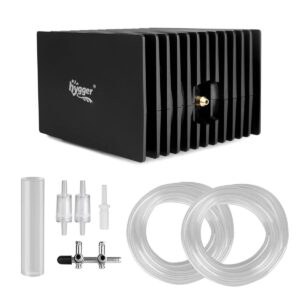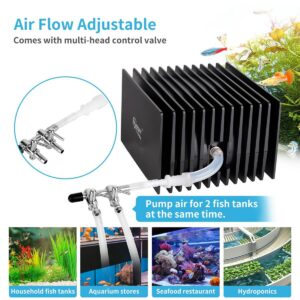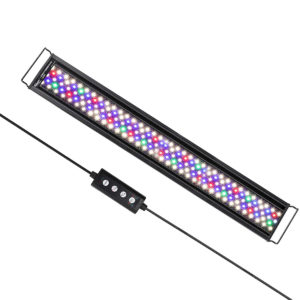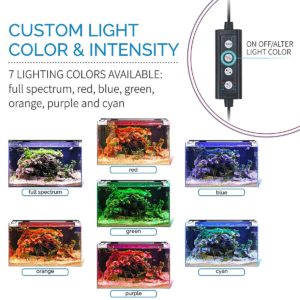How to Set Up a Community Fish Aquarium
If you have heard of community fish, then you would not be unfamiliar with community fish aquariums. Setting up a community fish aquarium can be an excellent alternative for beginners. Then how to set up an aquarium for community fish? If you are interested in answers to the question and more, read on to find out everything you need to know about the community fish aquarium setup.
Community fish aquarium
The same as common fish tanks, community fish aquariums consist of pets, live or artificial plants, substrate, aquarium decor, aquarium supplies, etc. However, there is also something different. The fish in community aquariums are commonly compatible in one tank and are easy to care for. Thus, to some extent, community fish aquariums are the best for beginners.
Featuring more than one fish species in the tank, community aquariums can be colorful and with a higher aesthetic value. The community fish aquariums mimic fish’s natural habitat. As for fish in community tanks, you can choose according to the tank size and your needs. Neon tetras, Guppy fish, Angelfish, Platy fish, and Swordtail fish are popular among aquarists. No matter what fish you choose, you’d better research their needs and habits before introducing them to the community tank.
By the way, fish featuring the following characteristics are not great options for community fish aquariums.
- Aggressive or territorial fish, like cichlids and red-tailed black sharks.
- Large and active fish, like large catfish.
- Vulnerable fish, like discus fish.
What equipment do you need for community aquariums
To keep healthy community aquariums, adding some necessary aquarium equipment is critically crucial.
1. Aquarium light
Aquarium light is crucial for aquariums. As for aquatic plants, light has an impact on the colors of plants. While light is beneficial to enhance fish’s color and provides a more natural habitat for fish. Commonly, you can keep an aquarium light on for about 8–12 hours per day. Just determine it according to your aquarium status such as tank size, storage density, and plant lighting requirement.
Besides that, if you want to learn more about aquarium lighting, you can go to:
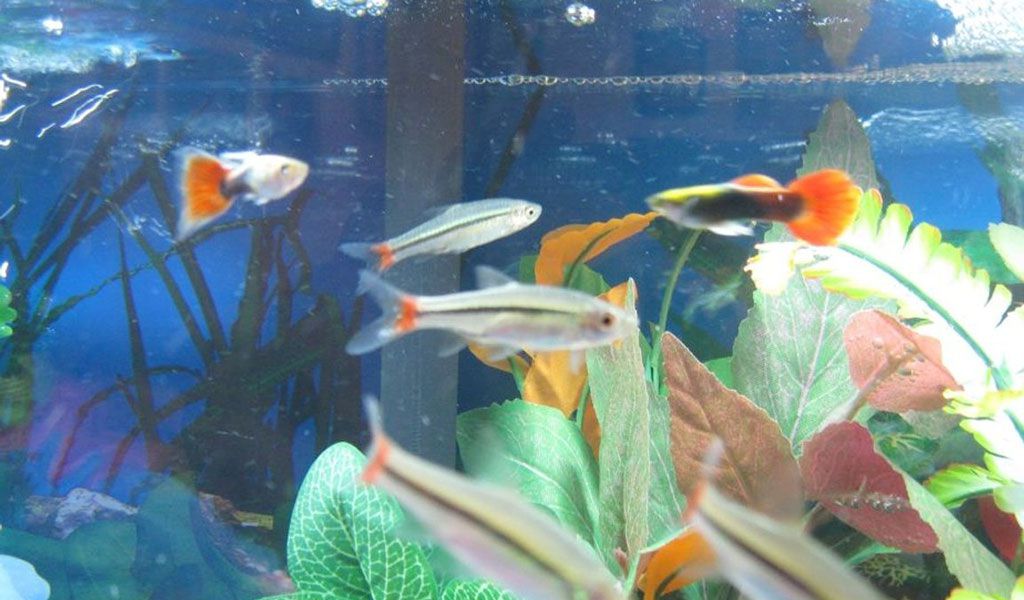
2. Aquarium heater
Most fish rely on the surrounding environment to adjust their body temperature. An aquarium heater can warm up the water quickly and keep it consistent water temp. An aquarium with a thermometer can be an excellent alternative. Because you can check the real-time water temp easily. Also, it is recommended to place the non-submersible heater near the outflow of aquarium filters. While the submersible heaters should be installed near the intake of aquarium filters.
For additional info about aquarium heaters, you can read:
3. Aquarium filter
Aquarium filter pumps can make sufficient surface agitation and remove profitless and harmful substances. For instance, ammonia, nitrite, and nitrate. Consequently, the water quality can remain stable.
4. Air pump
Aquarium air pumps mainly play roles in oxygenating aquarium water and expelling excess carbon dioxide. Accordingly, you can keep sufficient oxygen levels in your tank. For oxygen-consuming fish, adding an air pump is essentially vital.
How to set up a community aquarium
Preparation for tank setup
- Determine an ideal location. To reduce frequent and sudden water temp changes, the tank should be kept far away from windows, heat vents, direct sunlight, etc. Plus, you should make sure that your aquarium stand or floor can support the tank and water weight.
- Design the tank layout – which substrate is better, or where should the aquarium equipment and decors be placed?
- Rinse the aquarium, substrate, and other aquarium decors with tap water in advance. Keep in mind – never use soap.
- Prepare necessary aquarium equipment, such as aquarium light, filter, and air pump. Which equipment is necessary is determined by your community tank.
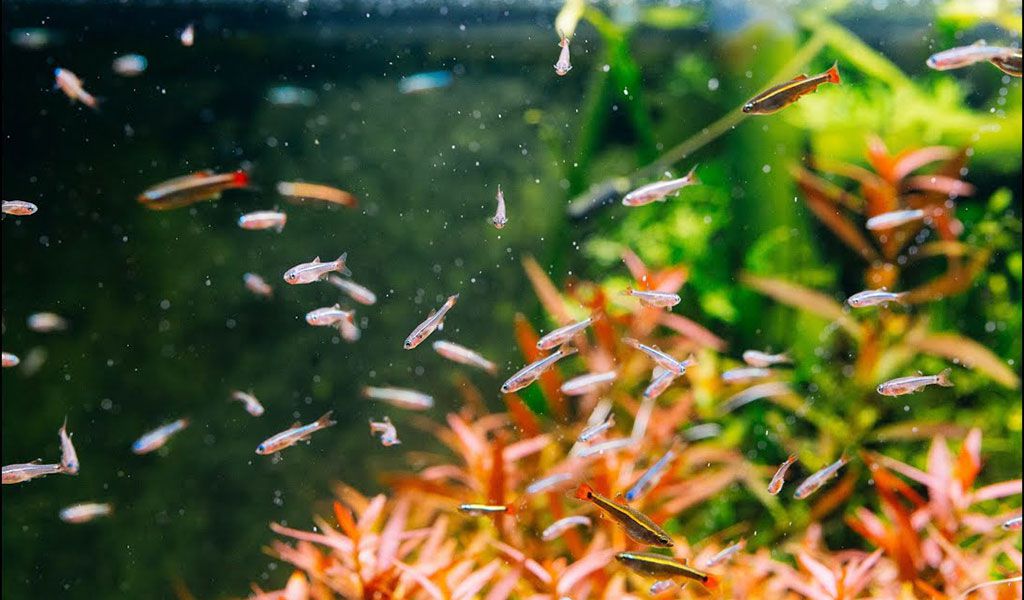
Set up a community aquarium
Community aquarium setup is not difficult. Just take the following steps as an example. Usually, you can add the substrate to your tank first. Then, place the aquarium decorations on the aquarium. After everything is well done, you can add water gently. Next, install and connect the aquarium equipment necessary for your tank. After waiting for 24–48 hours, check whether your tank is in great condition and whether the equipment is running properly. If your answer is yes, then you can gradually introduce fish to your tank. Do not add too many at once. Otherwise, fish may get trapped in stress, which may lead to health issues.
Ongoing care
By and large, regular water changes to maintain great water quality can be one key point. Aside from that, we will share some care tips in this part.
Daily care
- Observe the fish’s status and determine whether they show abnormal behavior.
- Check the aquarium equipment.
- Monitor the water temperature.
Weekly care
- Change the aquarium water partially. Commonly, you can change 15-30 percent of the water once each week.
- Test the water with aquarium water test strips. For example, the nitrate level should be below 20 ppm.
Monthly care
- Remove unnecessary algae with the help of a fish tank cleaner.
- Do thorough water changes and clean the fish tank and aquarium decor.
- Clean the aquarium filter and filter media with water in your aquarium or tap water. If necessary, you should replace the fish tank filter. But do not rinse them with soap or other chemicals, which may be harmful to your pets.
Reminder
In addition to care tips, we will list some pointers for some tank health issues. Hence, help you when you are in need.
| Tank health issues | Causes | Treatment |
| Cloudy water | 1. Residue build-up on the substrate. 2. Bacteria thrive during the tank cycling process. 3. Organics and minerals in the water. |
1. Remove unnecessary debris with the help of a gravel cleaner. 2. Change 15-30 percent of aquarium water. 3. Add nitrifying bacteria additive. |
| Green water | 1. Algae thriving in the tank. 2. Intense light. 3. Excessive levels of nitrates and phosphates. 4. Excessive nutrients because of overfeeding. 5. Overstock. |
1. Set ultraviolet filtration to deal with algae. 2. Lower the light intensity and reduce lighting hours. 3. Change the water thoroughly. 4. Limit the feeding quantity and frequency. |
| pH fluctuations | 1. Accumulation of unnecessary substances, like uneaten fish food, waste, and fish feces. 2. Raising of carbon dioxide level. |
1. Change 15-30 percent of aquarium water. 2. Remove unnecessary debris. 3. Reduce feeding amount. 4. Improve water circulation and oxygen levels. |

